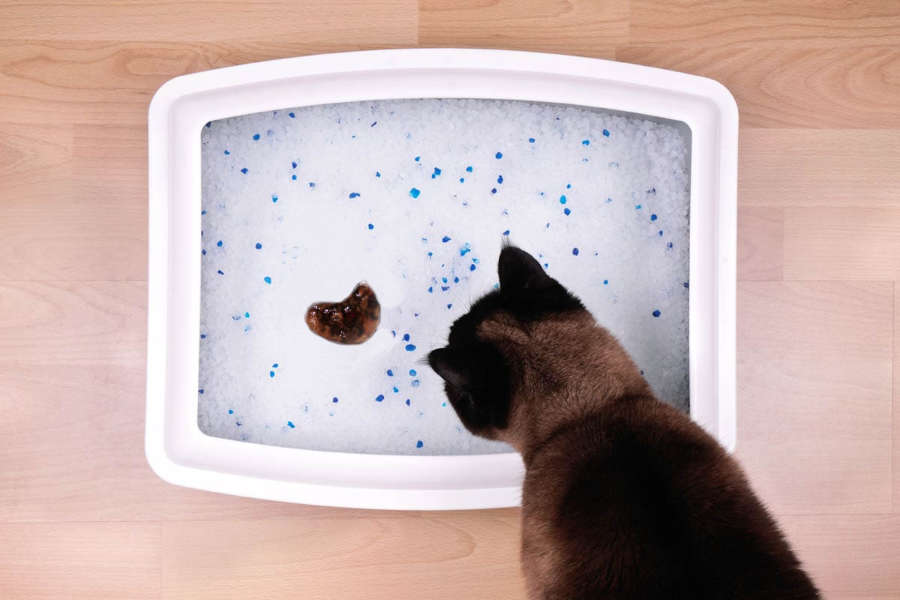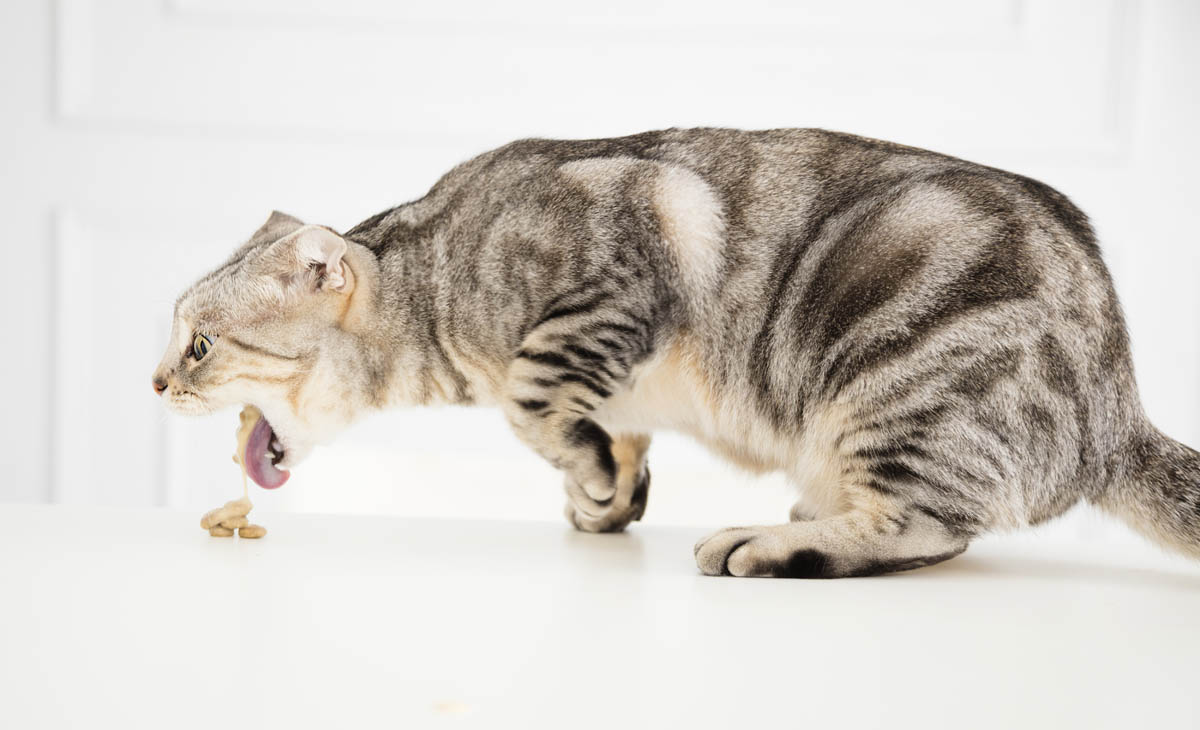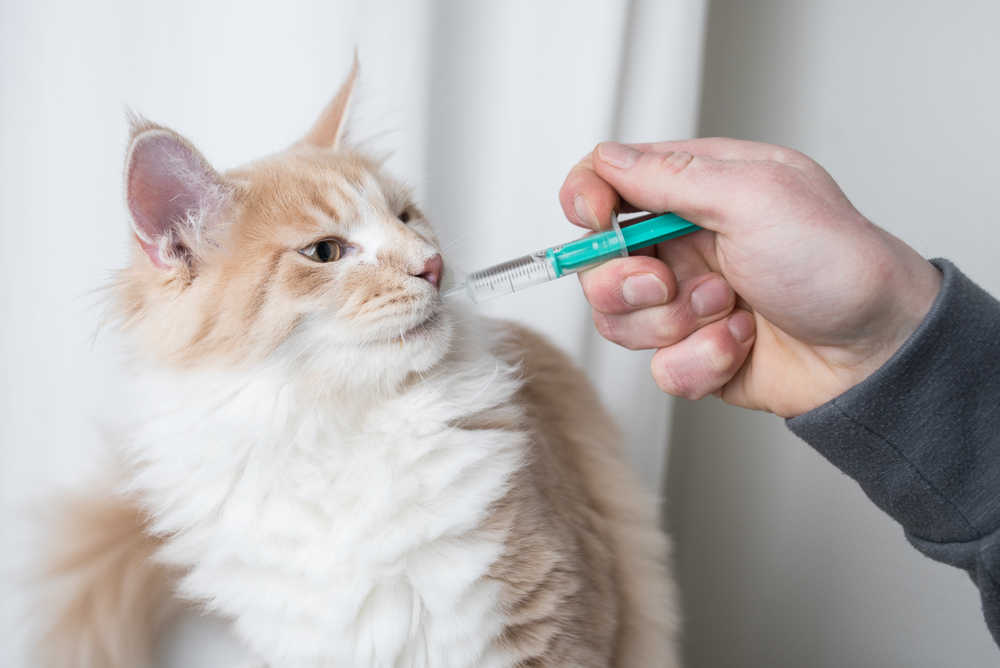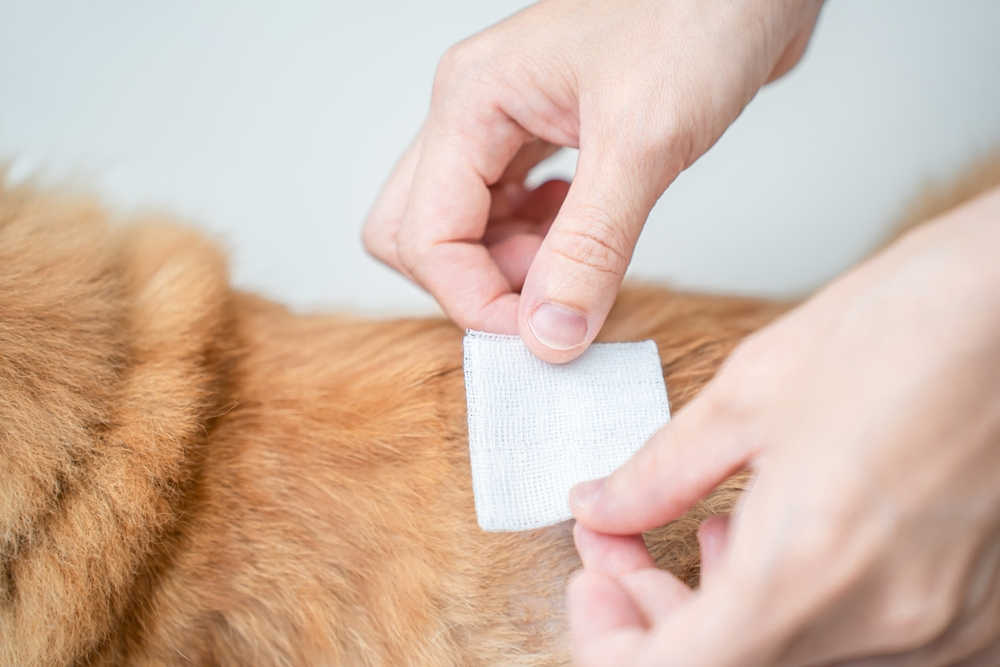The excitement of owning a new kitten is quickly dampened when you realize that not only is your cat very itchy and losing hair, but your human family members have also developed red itchy scabs on their bodies. This is an all too familiar scenario as a vet and it becomes quite complex to treat highly contagious ringworm in cats. Fortunately, once a definitive diagnosis has been made, there are a variety of treatments available to win the battle against ringworm.
What is ringworm in cats? what do ringworm scabs look like? (with pictures)
Ringworm is a fungal infection that affects the skin in cats, as well as humans and other mammals. The name of the condition, ringworm, can cause confusion as one would assume that the infection is caused by a worm, but the name is misleading. There are a number of fungi that infect the skin cells, and they often form a reddish, round, itchy area of hair loss with a ring of scaly skin around the area. In humans, the ring of scaly skin can resemble a worm.
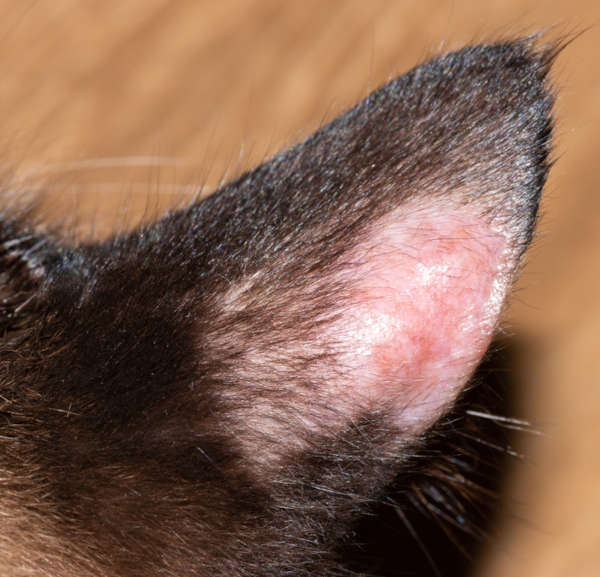
What are the causes of ringworm in cats?
The scientific name for ringworm is dermatophytosis and the fungi that cause the lesions are dermatophytes. Whilst there are a number of dermatophytes that cause ringworm infection in cats, the most common fungus is Microsporum canis. Many cats will carry the dermatophytes on their skin without displaying symptoms and these cats may transmit the fungi to other cats in the household. They will also drop fungal spores with their normal skin cells and loose hair and contaminate the household.
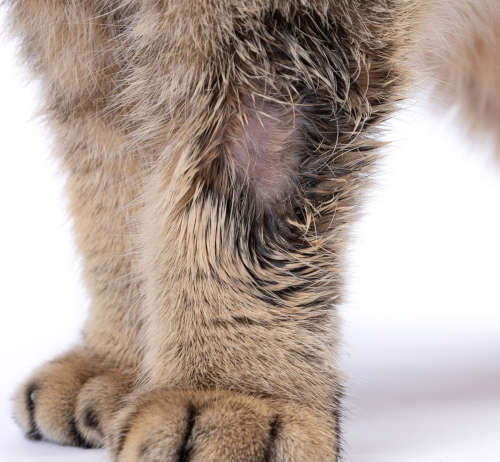
Cats may be exposed to the fungal spores from direct contact with another cat or contact with the fungal spores in the environment. This environmental contamination with fungal spores can make it difficult to treat and control the infection. Fungal spores are resistant to treatment and may persist for up to 18 months in the environment. Most cats are naturally resistant to dermatophytes, but very young cats, geriatric cats or cats with suppressed immune systems may not be able to keep the fungal at bay and they will develop symptoms. Persian cats are more susceptible to ringworm than other cat breeds.
Some medications, e.g. cortisone or cyclosporin can suppress the cat’s immune system, making them more susceptible to ringworm. Viral infections such as Feline Immunodeficiency Virus (FIV) or Feline Leukaemia Virus (FeLV) may also suppress the cat’s immune system.
Symptoms that indicate the presence of ringworm
Any change in the skin can indicate the potential presence of ringworm. Typically, cats with ringworm will:
- lose hair in a patchy fashion
- develop a scaly, red, inflamed and itchy area on the skin (“ringworm scabs”)
The most commonly affected areas are the face, ears, feet and tail. The fungus can also infect the nail beds and tail and may be confused with other skin conditions such as mange, miliary dermatitis, feline acne or “rodent ulcers”.
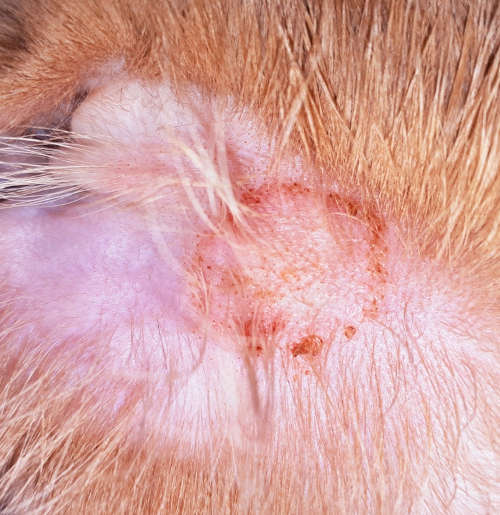
Unfortunately, many other skin conditions can look very similar to ringworm, and it is impossible to ascertain what the cause is without seeing a vet and allowing them to do certain diagnostic tests to establish the cause of the skin condition.
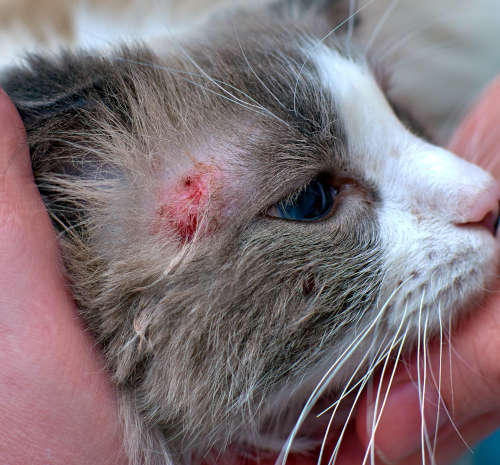
When to call your vet
Whenever you notice a change on your cat’s skin it is important to have them checked by the vet. The vet will need to perform a few tests to get to the find the underlying cause of the ringworm and to treat it appropriately. Trying to treat your cat’s skin condition at home without being certain of the cause can worsen the skin condition and delay your cat’s recovery and may cause it undue stress. Ringworm is also contagious to other cats and to people and prompt, effective treatment will prevent others from getting infected.
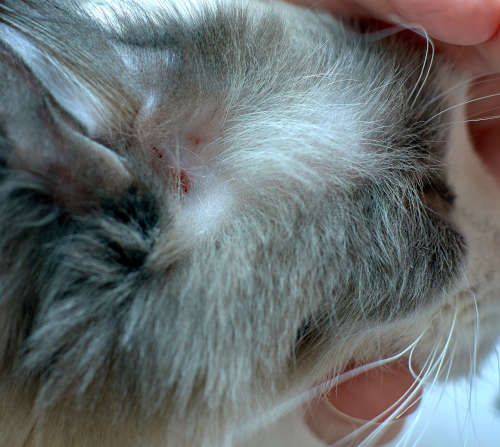

Pictures of ringworm & ringworm scabs in cats
What will your vet do?
Your pet will do a full examination including a history to determine if your pet has any underlying or risk factors. They will also ask questions regarding your cat’s diet and history of tick and flea control.
They will then examine your cat with a Wood’s lamp. This lamp uses various wavelengths of light to detect the presence of dermatophytes on the fur and skin. It is not 100% accurate in all cases and if they strongly suspect dermatophytes even though the Woods’ lamp test is negative, then they will take samples of hair for fungal culture.

Fungal cultures are helpful because they identify which fungus is causing the ringworm, but they can take up to 10 days to yield a result. The vet may start treatment whilst waiting for the result. Fungal PCR testing is a newer, quicker and more sensitive test that is variably available depending on your location. They may also do other tests such as skin scrapings and hair plucks to ensure that there are no other infectious agents causing the skin condition, e.g. mange mites or bacterial infections. If your cat is positive for ringworm then the vet may recommend testing for Feline Immunodeficiency Virus (FIV) and Feline Leukaemia Virus (FeLV) because these are the two most common causes of a suppressed immune system.
If they still cannot establish a cause at this point, they may recommend a treatment trial or skin biopsies which are taken under anaesthesia.
Treatment for ringworm
There are three treatment routes that your vet will consider for your specific situation:
1. Topical – medications that are applied directly to the cat’s skin

2. Systemic – oral medications that are dosed to the cat, either in a pill or liquid form
3. Environmental- this can be critical to decrease the risk of exposure to fungal spores and to stop re-infection.
Whatever treatment route is used, it is important to note that it may take some time to get the infection under control and it essential to follow all instructions and to complete the treatment properly.
Topical treatments include lime sulfur dip and miconazole-chlorhexidine rise or shampoo. It is essential to dilute it as instructed and to allow for the appropriate contact time. The vet may also recommend that all the animals in the household are treated topically to destroy any fungal spores that they may be carrying. If there are only one or two small lesions, a topical anti-fungal ointment containing an anti-fungal such as miconazole or clotrimazole may be prescribed.
The most used oral medications are itraconazole and terbinafine. Griseofulvin is an older treatment that is not commonly used any more but can be very effective. All of these medications are available only with a prescription and in some cases the vet may have to compound them into an appropriate dose, particularly for kittens. There are various treatment protocols which range from daily dosing to once or twice weekly depending on the individual cat and the medication that the vet deems appropriate.
How to treat cats with ringworm at home
Whilst we would not recommend attempting treatment at home without seeing a vet first, it is essential to decontaminate the environment to get the infection under control. In most cases it is preferable to isolate the infected cat from other cats in the household.
- Thorough cleaning of the environment including thorough vacuuming and steam cleaning of carpets and upholstery and disinfection of floors (using a dilute bleach solution or appropriate disinfectant as recommended by your vet).
- All laundry should be washed twice and bleached if appropriate to the fabric. Fungal spores can survive in the environment for up to 18 months and thorough disinfection is essential to prevent re-infection.
- All other pets in the household should be screened for dermatophytes by the vet and thoroughly bathed in an appropriate anti-fungal shampoo or dipped with an anti-fungal dip, to decrease the load of fungal spores that they may be carrying.
- If you or any other person is infected then consultation with a doctor is required to obtain prescription treatment.
- Practising meticulous hand washing and hygiene precautions after contact with the infected cat is essential.
Ringworm is highly contagious to other cats and to humans
Yes ringworm is highly contagious to other cats, especially if they are very young or geriatric. Unfortunately ringworm is also contagious to humans (known as a zoonosis) and to other animals in the household, for example dogs.

More pictures of ringworm in cats
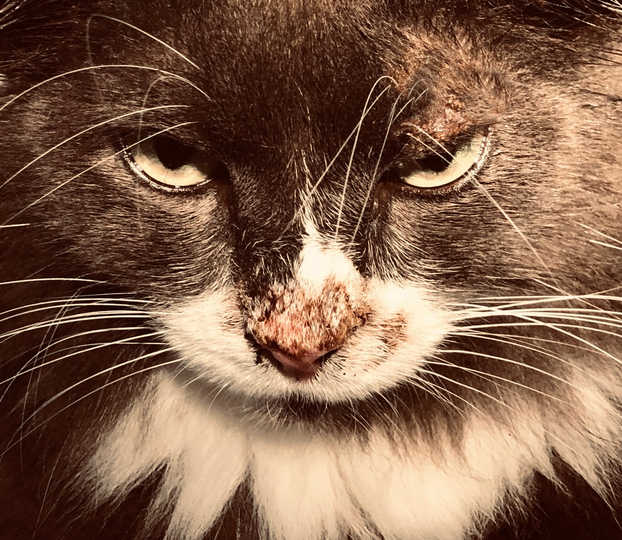
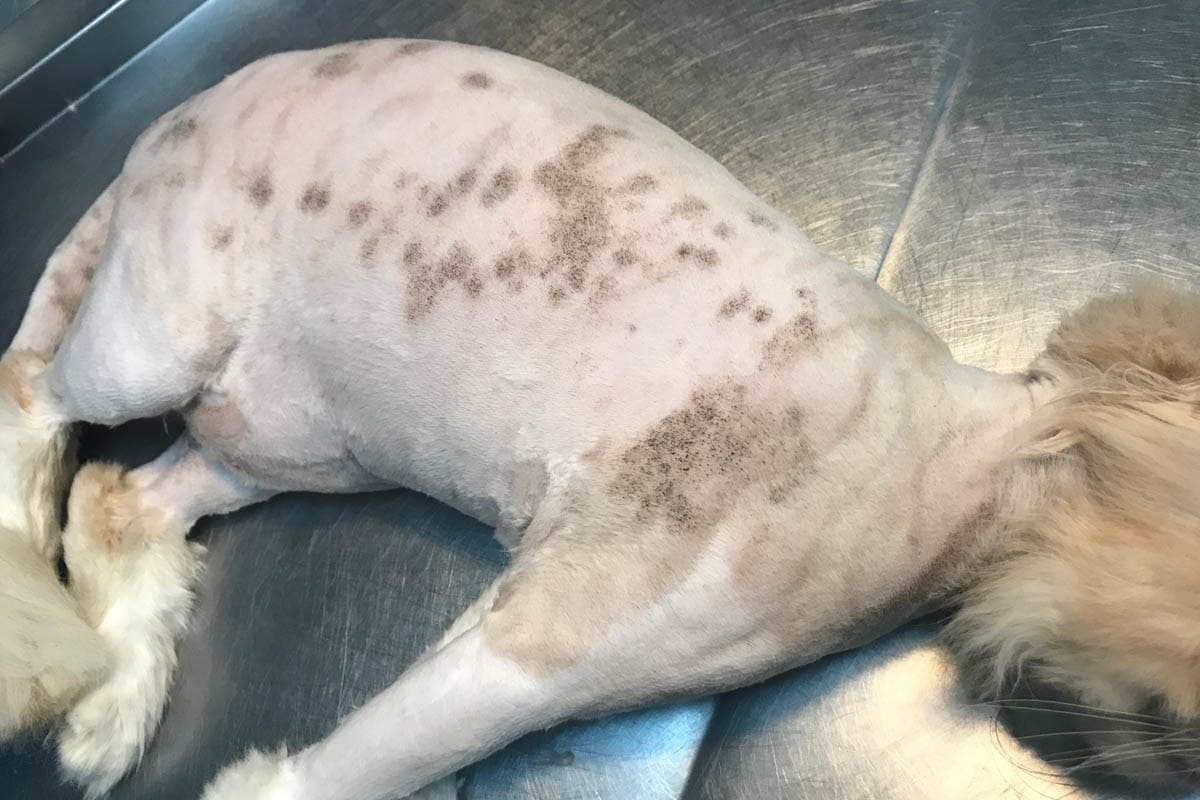
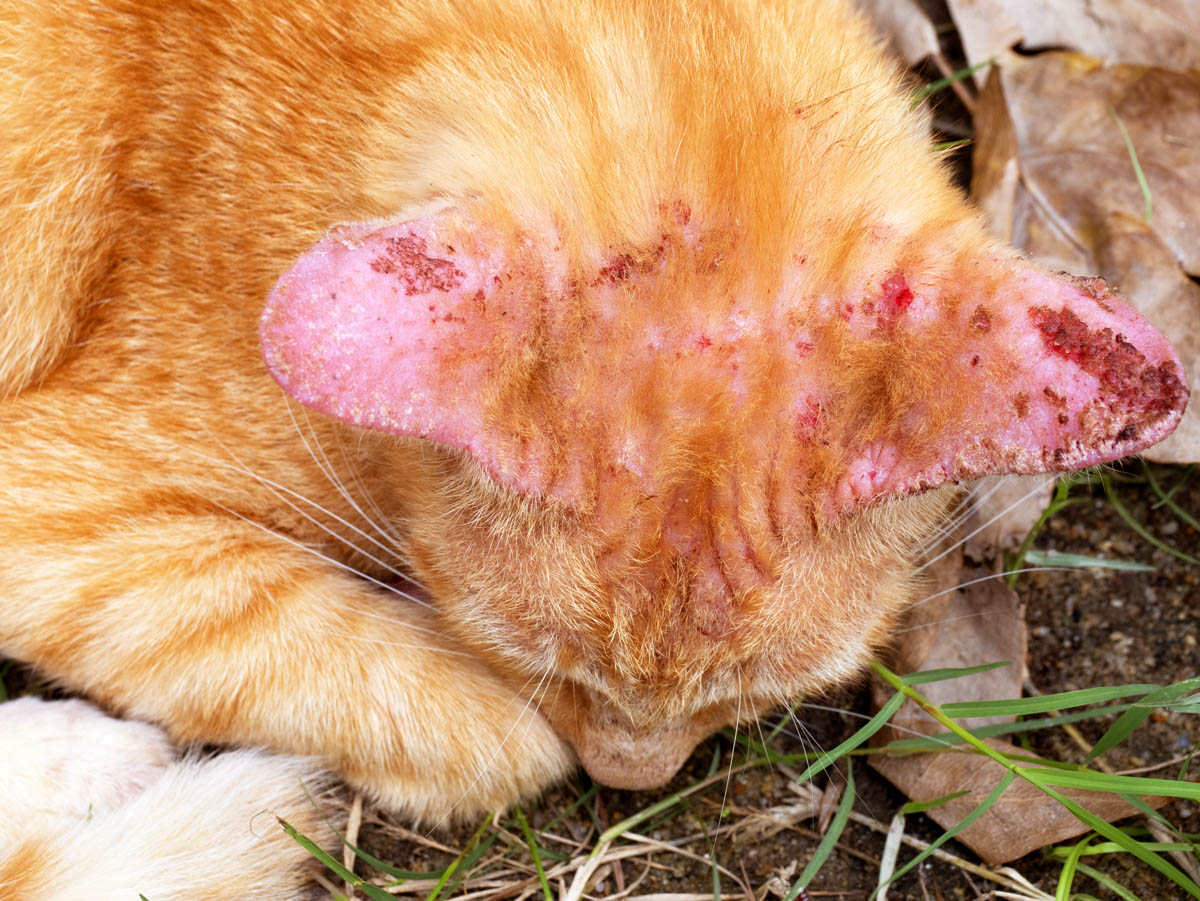
How long does it take for ringworm in cats to be eliminated?
Ringworm can be lengthy, frustrating and costly to treat due to the risk of environmental contamination and frequent re-infection. It can take 2 -16 weeks to thoroughly clear the infection. In animals with weakened immune systems, it may take even longer. Fortunately, ringworm is hardly ever fatal, but it is frustrating and time-consuming to treat and eliminate.
References:
https://www.dvm360.com/view/ringworm-diagnostics-treatment-and-management-strategies-proceedings-0
https://veterinarypartner.vin.com/default.aspx?pid=19239&id=4951439
Ringworm at a glanceWhat is ringworm? Ringworm is a highly contagious, generally superficial fungal infection of the skin, fur and nails, caused by a fungus of the genus Microsporum and Trichophyton.How do cats become infected with ringworm? Infection occurs via direct contact with an infected animal or fungal spores which are in the environment on objects which commonly include grooming equipment, bedding, collars and ectoparasites. How do you know if a cat has ringworm?
Is ringworm contagious to humans? Yes, ringworm is zoonotic which means the infection can spread from cats to people or people to cats (and other pets). Treatment: Oral antifungal drugs, medicated baths and/or medicated shampoos and dips. The environment must be |
